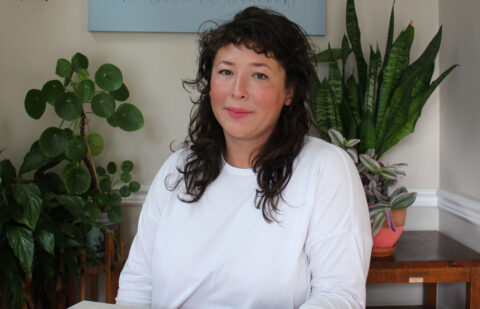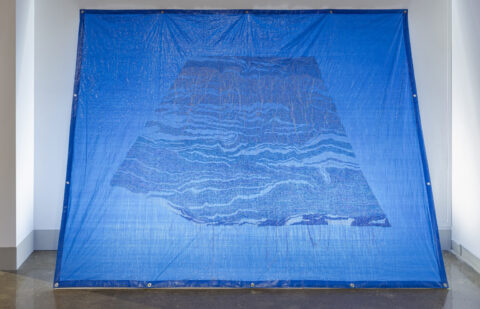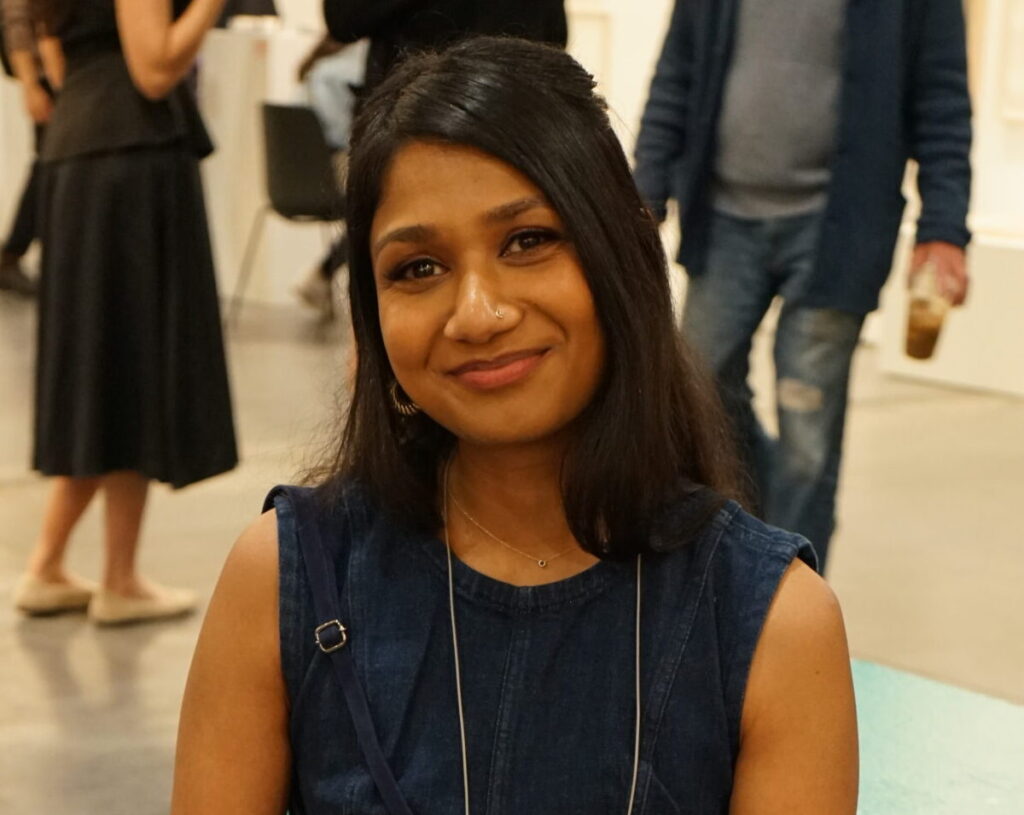
Please join us in welcoming Par Nair to the RBC Emerging Artist Residency Program! To learn more about Par’s artistic practice and her plans for the artist studio, visit her profile and read her blog post below!
Over the last few years, my art practice and research has focused on examining lived experiences of diaspora using decolonial methods and a return to ancestral practices.
Using multidisciplinary processes that include oil painting, installation, hand embroidery, and poetic writing, my work considers displacement and belonging by reconnecting with traditional practices as a way of paying tribute to my ancestors, who endured colonialism.
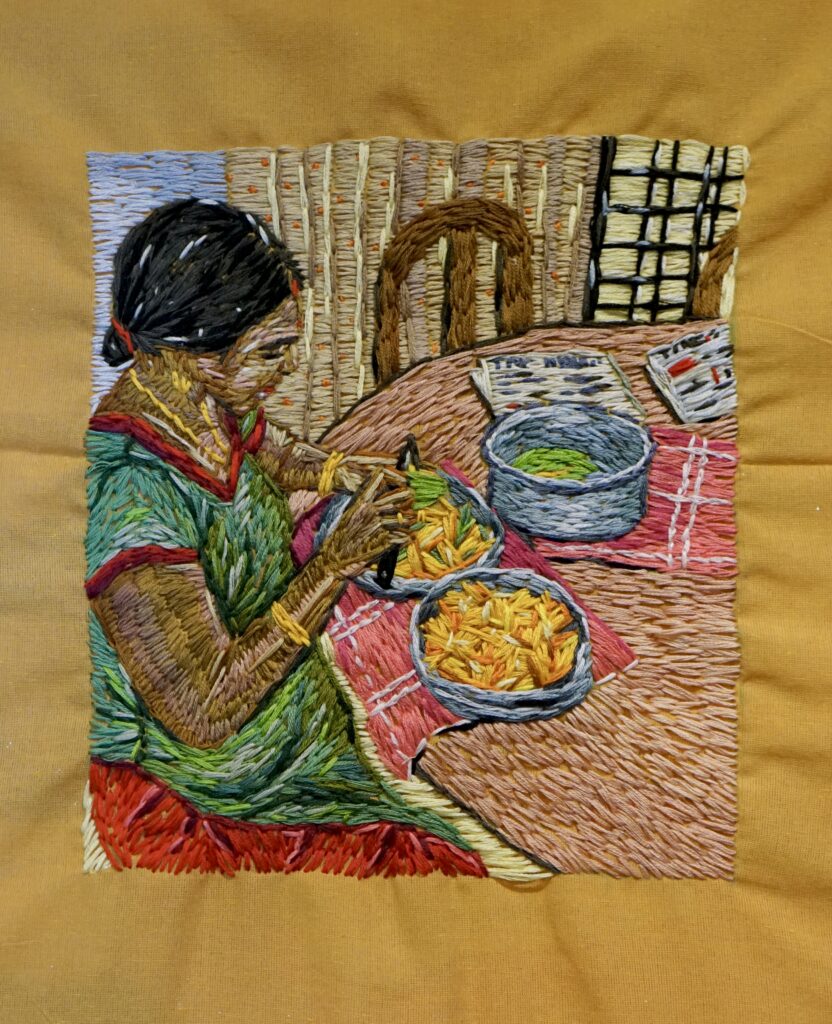
For those new to practice, I was born in South India and moved to Canada about fourteen years ago. Even though my training and background is in oil painting, my practice has slowly taken on an interdisciplinary voice incorporating hand embroidery and textiles from South India. I’m interested in how textiles can carry memory, cultural heritage, historical contexts and personal narratives of migration. Much of my current work draws from familial photographs that were collected by my grandmother. When I look at these photographs of the past, I find myself drawn to quiet, overlooked moments that seem to have gone unnoticed. Moments that were missed, or dismissed—the distance in a shared glance, the space between bodies in embrace, the stillness of a room full of people. I’m fascinated by the possibilities in the banal – the gestures, objects, and emotions that shape the domestic. By reimagining these moments through my embroideries and oil paintings, I want to uncover and celebrate lives lived, but rarely centered, in the margins of history.
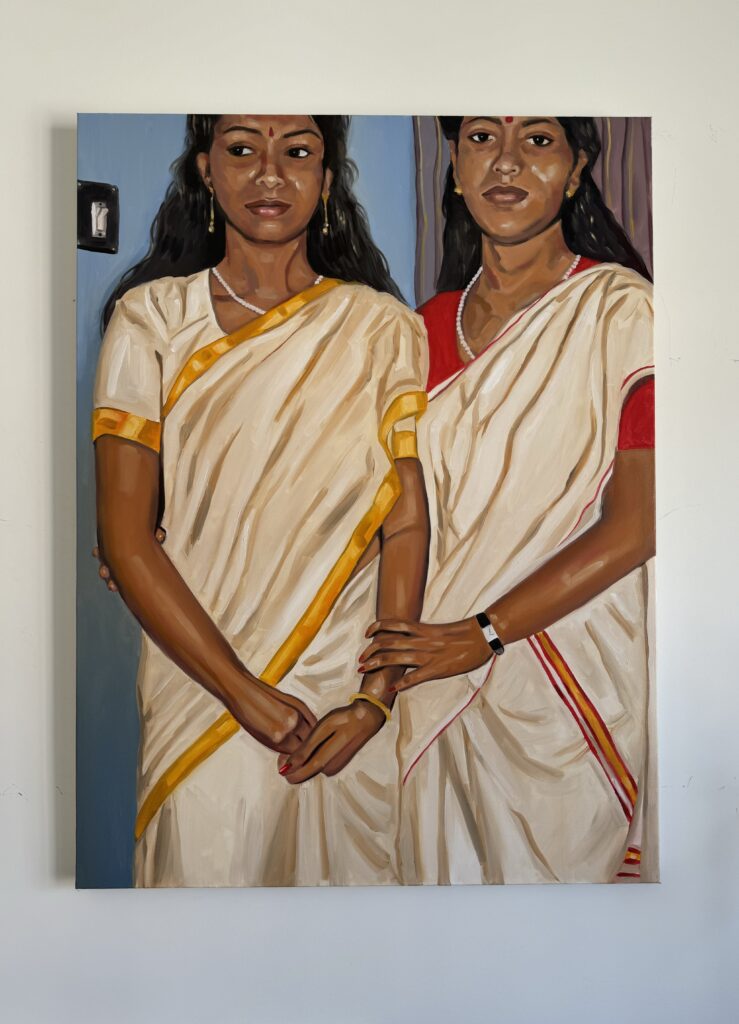
I plan on creating a series of embroideries and oil paintings during my time at RMG, based on archival photographs. This work will explore silenced narratives and “in between” spaces, while challenging prevailing stereotypes. At the core of this series, is my intention to create a visual conversation that honours the domestic realm. Often viewed through a lens of limitation or invisibility, the domestic space will be reimagined as a site of empowerment, possibility, resilience, and quiet revolution. This is a way for me to celebrate the labour of women in their homes and the significance of these deeply personal and intimate spaces that have historically been underappreciated. For me, the “in-between” is a space where untold histories reside. A place where contrasting embodiments of
freedoms and strength can co-exist. A place of soft revolution. The act of hand embroidery offers a method to intimately “touch” these spaces and speculatively examine diasporic futures. Embroidering by hand becomes a gesture of care – a symbol of healing from colonial wounds, and inherited trauma. It unfolds as an act of continuity, a portal to the past, a way of collaborating with the women who came before me, and together dreaming up futures that we never inherited.
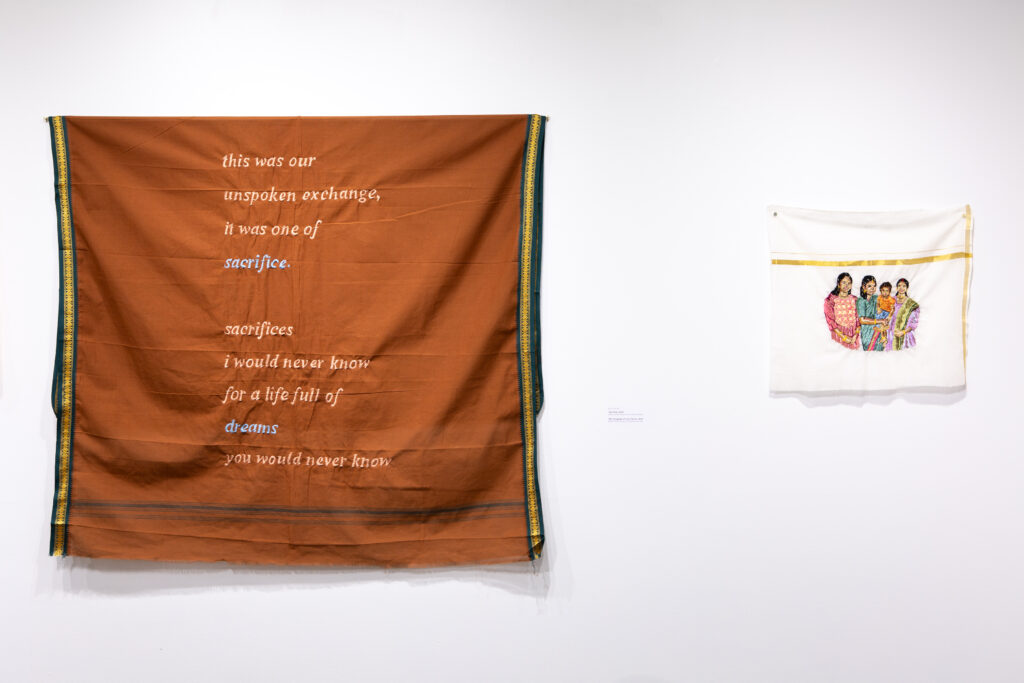
I look forward to the opportunity and space to engage more deeply with my work and research at the RMG! I can’t wait to start!

